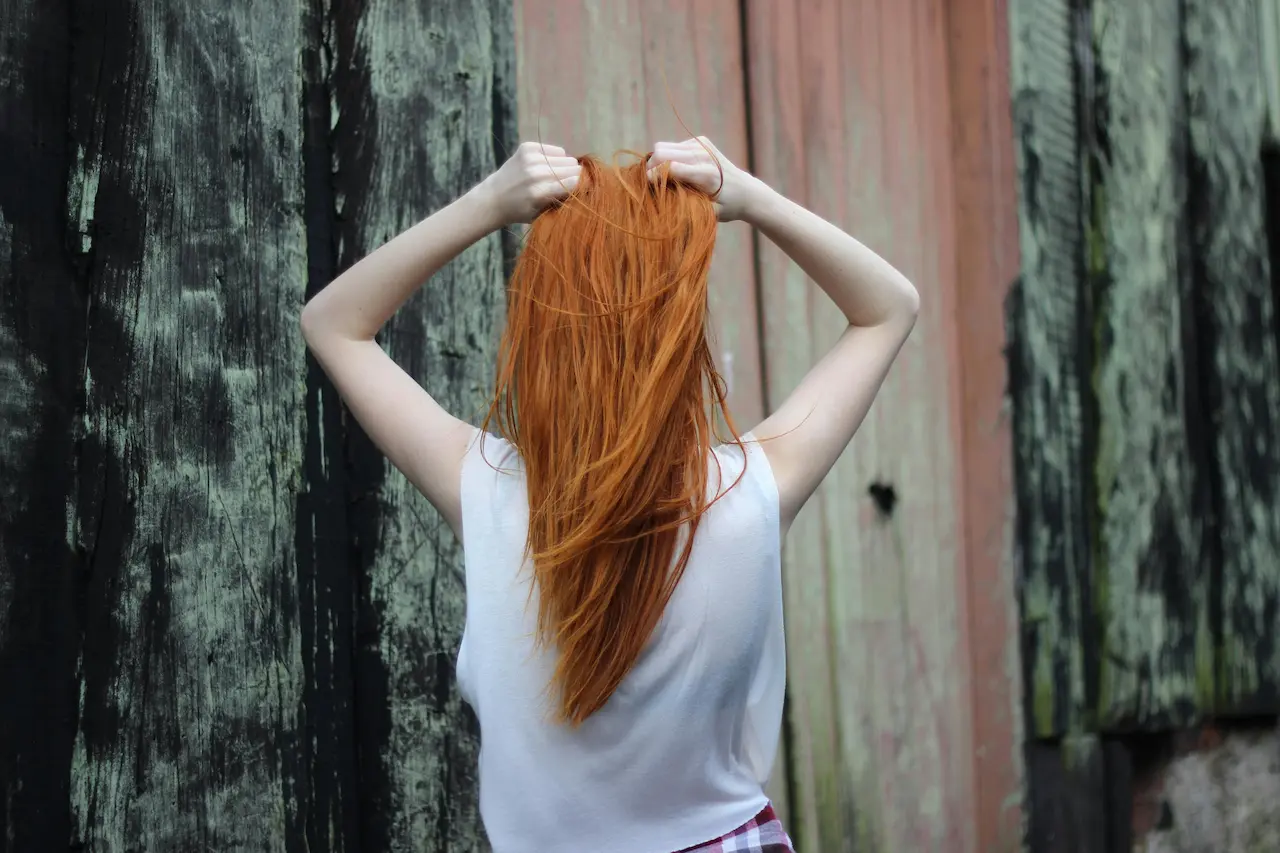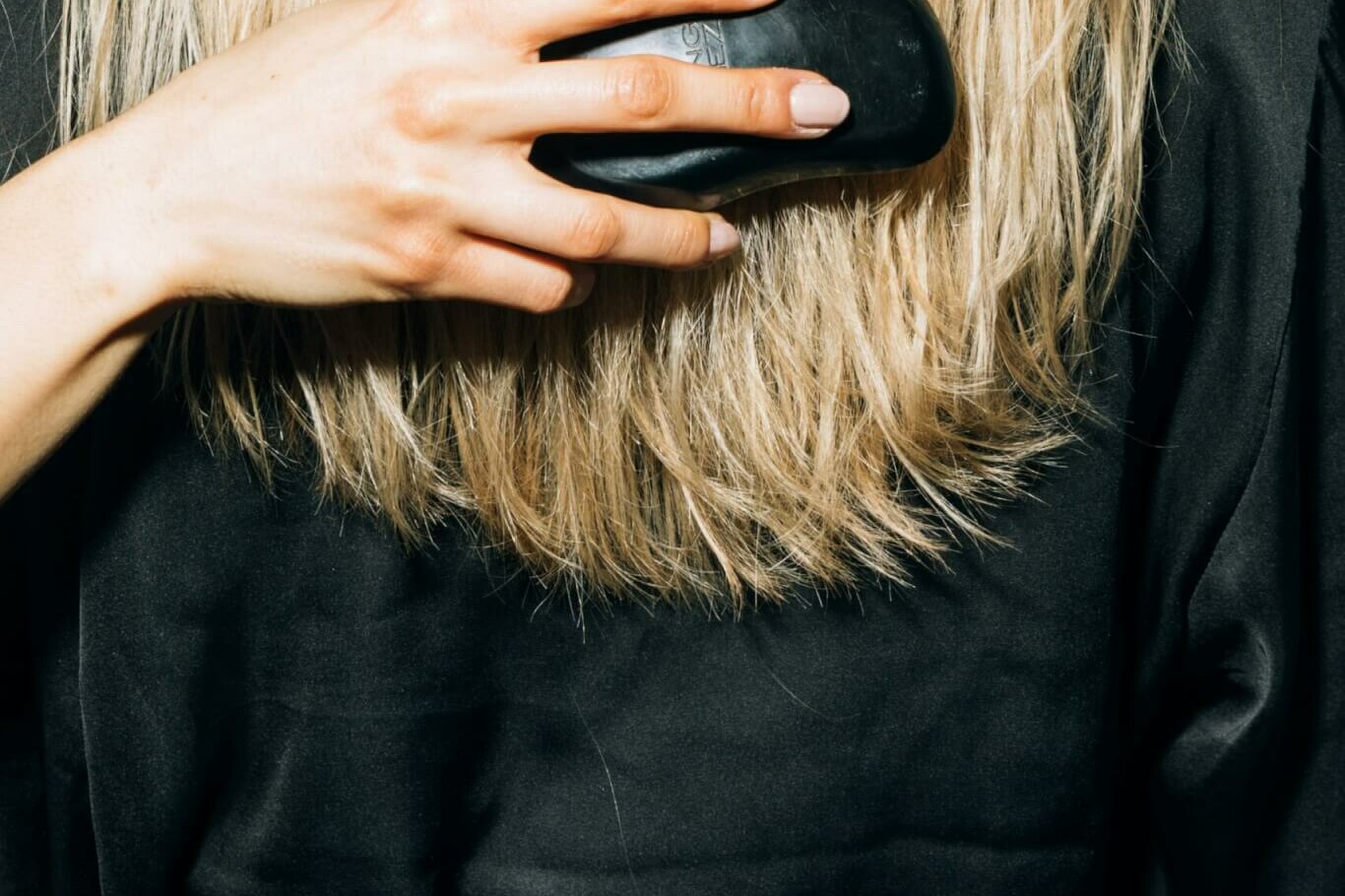What Is Dry Shampoo and How Does It Work?
Dry shampoo is a product designed to absorb excess oil and refresh your hair without the need for water. It usually comes in aerosol spray form, but there are also powder and mousse versions. The main ingredients in dry shampoo are starches or alcohols, which help soak up the oil from your scalp and hair, leaving it looking cleaner and feeling fresher.
When you spray or apply dry shampoo to your roots, the product works by absorbing the natural oils (sebum) produced by your scalp. Sebum is what makes hair look greasy when it builds up, so by removing this oil, dry shampoo gives the appearance of freshly washed hair. It also adds volume and texture, which can be particularly useful for styling.
The Appeal of Dry Shampoo
The popularity of dry shampoo has soared in recent years, and it’s easy to see why. It offers several benefits:
- Time-Saving: In a busy world, the convenience of dry shampoo is hard to beat. It allows you to skip a wash day, saving you time in your morning routine.
- Prolonging Hairstyles: Dry shampoo can help extend the life of a blowout or other hairstyles, reducing the need for daily heat styling, which can damage hair over time.
- Added Volume: For those with fine or limp hair, dry shampoo can provide an instant boost of volume, making hair look fuller and thicker.
- Less Frequent Washing: Washing hair too often can strip it of natural oils, leading to dryness and damage. Dry shampoo allows you to go longer between washes, helping to maintain a healthier moisture balance.
The Risks of Overusing Dry Shampoo
Despite its benefits, using dry shampoo too frequently can lead to several problems, particularly for your scalp and hair health. Here’s what can happen if you rely on dry shampoo too much:
1. Clogged Hair Follicles
One of the biggest risks of overusing dry shampoo is the potential for clogged hair follicles. Your scalp, like the rest of your skin, needs to breathe. When you apply dry shampoo, it leaves behind a residue that can accumulate over time, especially if you’re not thoroughly washing it out between uses. This buildup can block your hair follicles, trapping dirt, oil, and dead skin cells. Clogged follicles can lead to several issues:
- Reduced Hair Growth: When your follicles are blocked, it can impede the natural process of hair growth, leading to thinning or even hair loss over time.
- Scalp Irritation: Buildup on the scalp can cause irritation, itching, and inflammation. In some cases, it can also lead to scalp conditions like folliculitis, an infection of the hair follicles.
2. Dryness and Dandruff
While dry shampoo helps absorb excess oil, using it too often can dry out your scalp. The alcohols and starches in dry shampoo can strip away not just the excess oil, but also the natural oils that your scalp needs to stay healthy. This can result in a dry, flaky scalp, which may manifest as dandruff. A dry scalp is also more prone to irritation, leading to further discomfort and potential damage to your hair.
3. Altered Scalp pH
The frequent use of dry shampoo can disrupt the natural pH balance of your scalp. Your scalp has a slightly acidic pH, which helps protect against harmful bacteria and fungi. Overusing products like dry shampoo can alter this balance, making your scalp more susceptible to infections and other issues.
4. Weakened Hair
Dry shampoo can cause hair to become dry and brittle, especially if it’s used as a replacement for regular washing over a long period. The buildup of product on your hair can weigh it down, making it look dull and lifeless. Moreover, the starches and alcohols in dry shampoo can make your hair more prone to breakage, particularly if you use heat styling tools afterward.
How to Use Dry Shampoo Safely
Dry shampoo isn’t inherently bad for your hair or scalp, but like many things, it should be used in moderation. Here are some tips to help you incorporate dry shampoo into your hair care routine without compromising your scalp health:
1. Limit Use to Once or Twice a Week
Dry shampoo should be an occasional helper, not a daily go-to. Try to limit its use to once or twice a week, and use it primarily on days when you really need a quick refresh. On other days, embrace other hairstyles like ponytails, buns, or braids to manage oily roots without relying on dry shampoo.
2. Choose the Right Product
Not all dry shampoos are created equal. Look for products that are free from harsh chemicals, alcohols, and parabens. Some dry shampoos are formulated with nourishing ingredients that can help balance the drying effects. Consider trying a tinted dry shampoo if you have dark hair, as this can help avoid the white residue that some products leave behind.
3. Wash and Exfoliate Regularly
When you do wash your hair, make sure to thoroughly cleanse your scalp. Use a good quality shampoo that’s designed for your hair type, and consider incorporating a clarifying shampoo into your routine once a month to remove buildup. Additionally, a scalp exfoliator can help to gently remove dead skin cells and product residue, keeping your follicles clear and your scalp healthy.
4. Use a Scalp Treatment
Incorporating a scalp treatment into your routine can help maintain a healthy scalp environment. Look for treatments that promote circulation and soothe the scalp. Ingredients like tea tree oil, peppermint, and salicylic acid can help keep your scalp balanced and prevent issues related to dry shampoo overuse.
5. Be Gentle with Your Hair
If you use dry shampoo, avoid excessive brushing or styling afterward, as this can exacerbate the drying effects. Instead, gently massage the product into your scalp and let it sit for a few minutes before lightly brushing through your hair to distribute it evenly.
Alternative Solutions to Dry Shampoo
If you find yourself reaching for dry shampoo too often, it might be time to explore some alternatives. Here are a few options:
1. Refresh with Water-Based Sprays
Water-based hair refreshing sprays can be a gentler alternative to dry shampoo. These sprays can help revive your hair without the risk of buildup, offering a light, fresh feel without clogging your follicles.
2. Experiment with Hairstyles
Instead of using dry shampoo, try experimenting with hairstyles that work well with slightly oily hair. Braids, buns, and updos can all help manage hair that’s between washes without needing to rely on products.
3. Embrace a Washing Routine that Works for You
If you’re using dry shampoo to avoid washing too often, consider adjusting your washing routine. For example, you might wash your hair more frequently but with a gentle, sulfate-free shampoo that doesn’t strip your hair of its natural oils.
Conclusion
Dry shampoo is a convenient tool in the modern beauty arsenal, but like all good things, it should be used in moderation. Overusing dry shampoo can lead to clogged hair follicles, scalp irritation, and even impede hair growth. By understanding the potential risks and taking steps to use dry shampoo wisely, you can enjoy its benefits without compromising your scalp health or hair vitality.
Remember, healthy hair starts at the scalp. Whether you’re using dry shampoo or other hair products, always prioritize the health of your scalp to ensure your hair looks and feels its best. With the right balance of care, you can keep your hair fresh, strong, and beautiful—every day of the week.
Related Articles
September 6, 2025
Scalp Barrier 101 — How to Rebuild What Over-Cleansing Breaks
Your scalp is more than just the skin under your hair — it’s a living…
November 15, 2024
The Art of Detangling: How to Protect Your Wet Hair from Breakage and Split Ends
Detangling wet hair is a common part of many people’s hair care routine, yet…
November 10, 2024
The Hidden Dangers of Brushing Wet Hair: Why Your Hair is 50% Weaker When Wet and How to Protect It
Brushing your hair is an essential part of most people's daily grooming…




